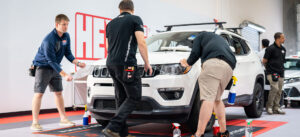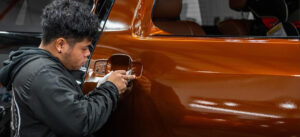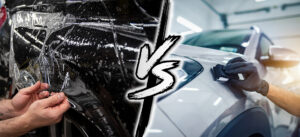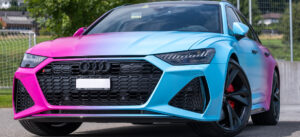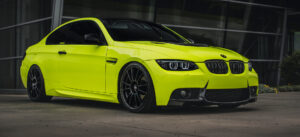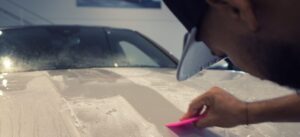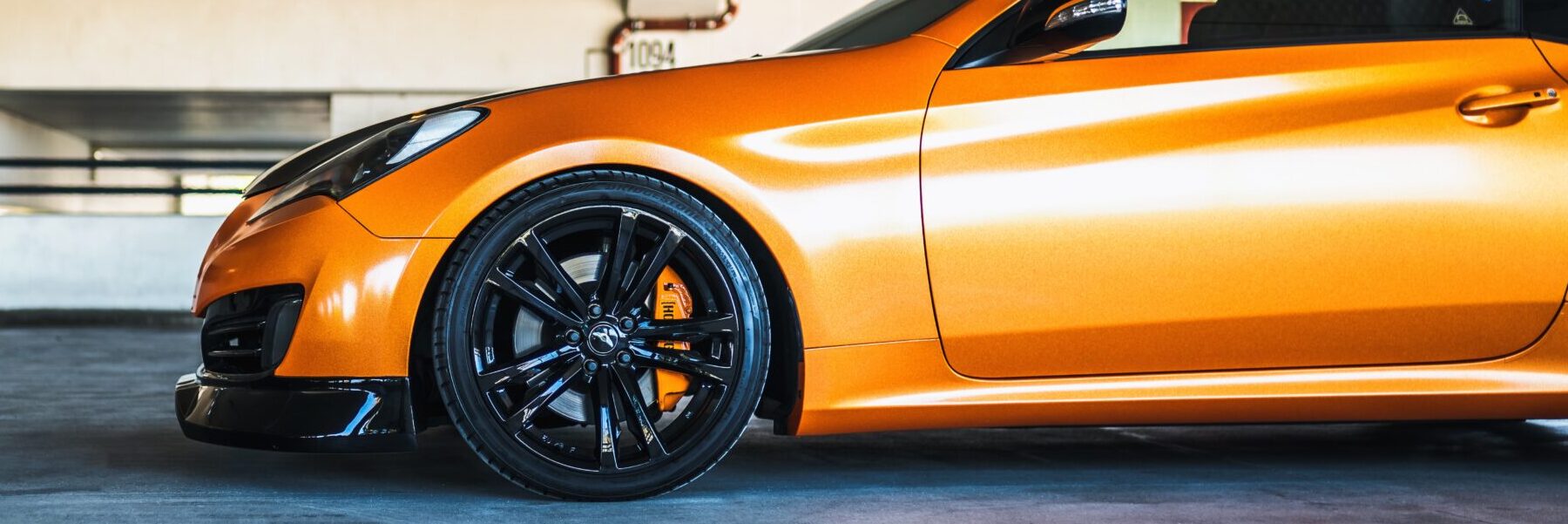
In world of automotive customization, the pivotal choice between car wrapping and traditional painting stands as a crucial decision for both enthusiasts and seasoned professionals and often weighed on cost, and longevity of these two methods. As you read on, we’ll touch on the merits and drawbacks associated with each approach. By the end of this discussion, we hope to provide you a well-rounded understanding of the factors that will guide you in making the best decision for your vehicle.
The Art of Car Wrapping
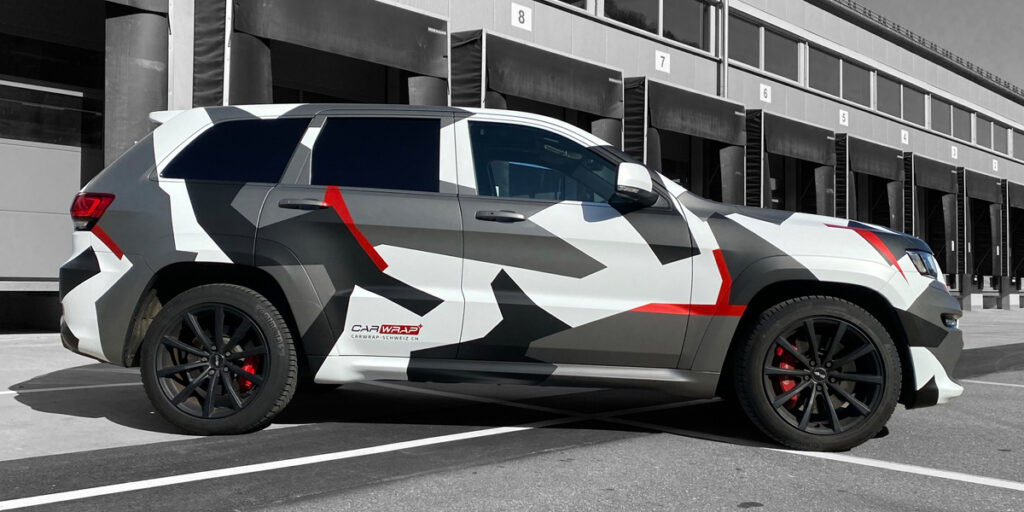
Car wrapping has quickly become a trend in the automotive industry boasting an estimated 7 billion dollar global market valuation for 2023. This is likely because it provides installers a dynamic canvas where creativity and individuality collide to offer dynamic designs to business and customers alike. As individuals seek ways to make their vehicles stand out, car wrapping emerges as a versatile and exciting option.
This process involves applying vinyl film to the vehicle’s surface, allowing for a stunning transformation in color, finish, and design. Let’s take a look at the pros of vinyl wraps that make it a go-to choice for many and weigh it against the cons that should be considered.
Pros:
Cost-Effective Aesthetics: Car wraps offer an array of design possibilities at a fraction of the cost of a high-quality paint job. Whether it’s a matte finish, a custom design, or a branding overhaul, wraps provide an affordable alternative to achieve a distinct look.
Temporary Transformation: Unlike paint, vinyl wraps are not permanent. This temporary nature allows car owners to experiment with different styles and colors without committing to a long-term change. It’s like having a wardrobe for your car that can be switched up whenever the mood strikes.
Protection Against Elements: Vinyl wraps act as a protective layer for a car’s original paint, shielding it from stone chips, road debris, and minor abrasions. This added layer can contribute to preserving the resale value of the vehicle.
Cons:
Durability Concerns: While vinyl wraps provide protection, they are not as durable as a high-quality paint job. Harsh weather conditions, frequent car washing, and other external factors can impact the longevity of a vinyl wrap, necessitating more frequent replacements.
Skill-Dependent Application: Achieving a flawless vinyl wrap requires skill and expertise. Improper application can lead to bubbles, wrinkles, and an uneven finish. This highlights the importance of wrap certification and car wrap training for those considering DIY projects or entering the professional arena.
The Precision of Automotive Painting
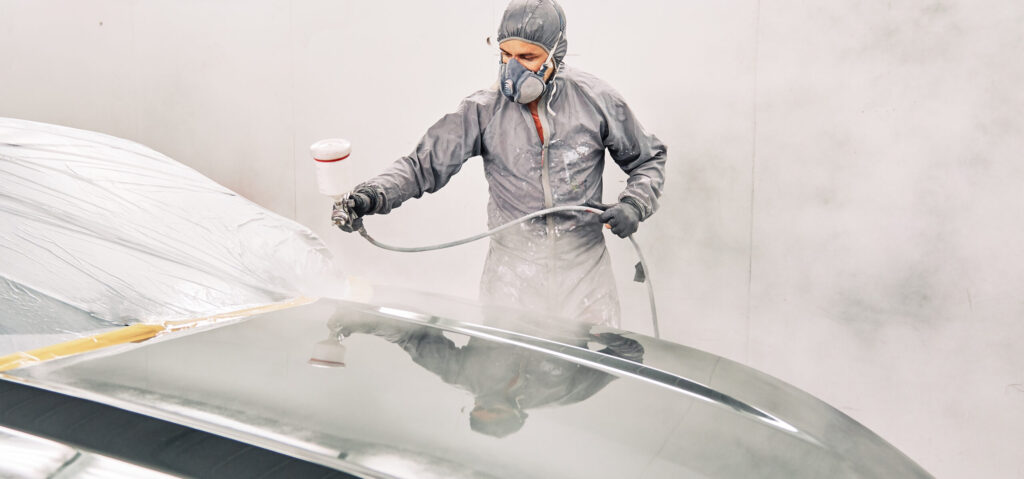
Automotive painting creates a timeless and polished finish and represents a classic approach to customization. It involves a meticulous process of preparing the surface, applying layers of high-quality paint, and achieving a seamless, enduring coat. Even with the rise in popularity of vinyl wraps, Research Nester estimates the global automotive paint market to be valued over 20 billion dollars. The allure of a well-executed paint job lies in its longevity and the ability to achieve a truly custom appearance. Now, let’s explore the pros and cons that accompany the practice. From the advantages that make it a symbol of sophistication to the limitations that come with permanence.
Pros:
Long-Lasting Finish: A professionally done paint job can withstand the test of time. High-quality automotive paint, when applied correctly, can maintain its luster and appearance for years, offering a durable and long-lasting finish.
Unlimited Color Choices: Unlike wraps, which come in specific colors and patterns, paint provides an almost unlimited range of color choices. This is particularly advantageous for those seeking a truly unique and customized appearance for their vehicles.
Professionalism and Elegance: A well-executed paint job exudes a sense of professionalism and elegance. For those aiming to achieve a classic or high-end look, paint may be the preferred option.
Cons:
High Costs: Quality automotive paint jobs often come with a hefty price tag. The cost includes not only the materials but also the labor-intensive process of surface preparation, priming, painting, and finishing. This high upfront cost can be a significant deterrent for budget-conscious car owners.
Limited Design Flexibility: Unlike wraps, which can be easily changed, paint is a permanent alteration. Changing the color or design requires another costly paint job, limiting the flexibility for those who enjoy frequently updating their car’s appearance.
Weighing the Costs: Car Wrapping vs. Painting
Financial Considerations:
Upfront Costs: Car wraps generally have lower upfront costs compared to high-quality paint jobs. This makes wraps an attractive option for those seeking a budget-friendly yet visually appealing transformation.
Maintenance and Replacement: While wraps have lower initial costs, the need for more frequent replacements due to wear and tear can add up over time. Paint, on the other hand, may have higher initial costs but requires less frequent maintenance.
DIY vs. Professional Services: The availability of wrap classes and wrap certification programs has made DIY car wrapping more accessible. However, the learning curve and potential for mistakes may still make professional services more appealing for those seeking a flawless finish.
Making the Decision: Wrapping vs. Painting
In the grand scheme of vehicle customization, the decision between car wrapping and painting ultimately boils down to personal preferences, budget considerations, and the desired longevity of the transformation. Each option has its unique set of pros and cons, and the choice is highly subjective.
For those inclined toward car wrapping, whether for personal projects or professional endeavors, the role of wrap certification and car wrap training cannot be overstated. These programs provide the foundation for mastering the art of vinyl application, ensuring that individuals can navigate the challenges associated with wraps effectively.
In conclusion, the choice between wrapping and painting a car hinges on a delicate balance between aesthetics, budget, and long-term goals. Whether you opt for the affordability and flexibility of car wraps or the timeless elegance of a professional paint job, the key is to make an informed decision that aligns with your vision for your vehicle. And if you’re venturing into the world of car wrapping, consider the valuable investment in wrap certification and car wrap training to hone your skills and set yourself on the path to success.
